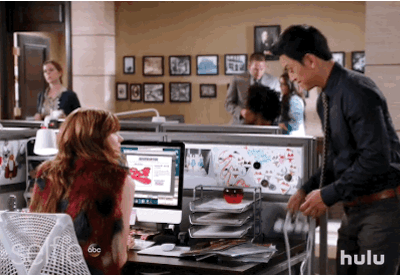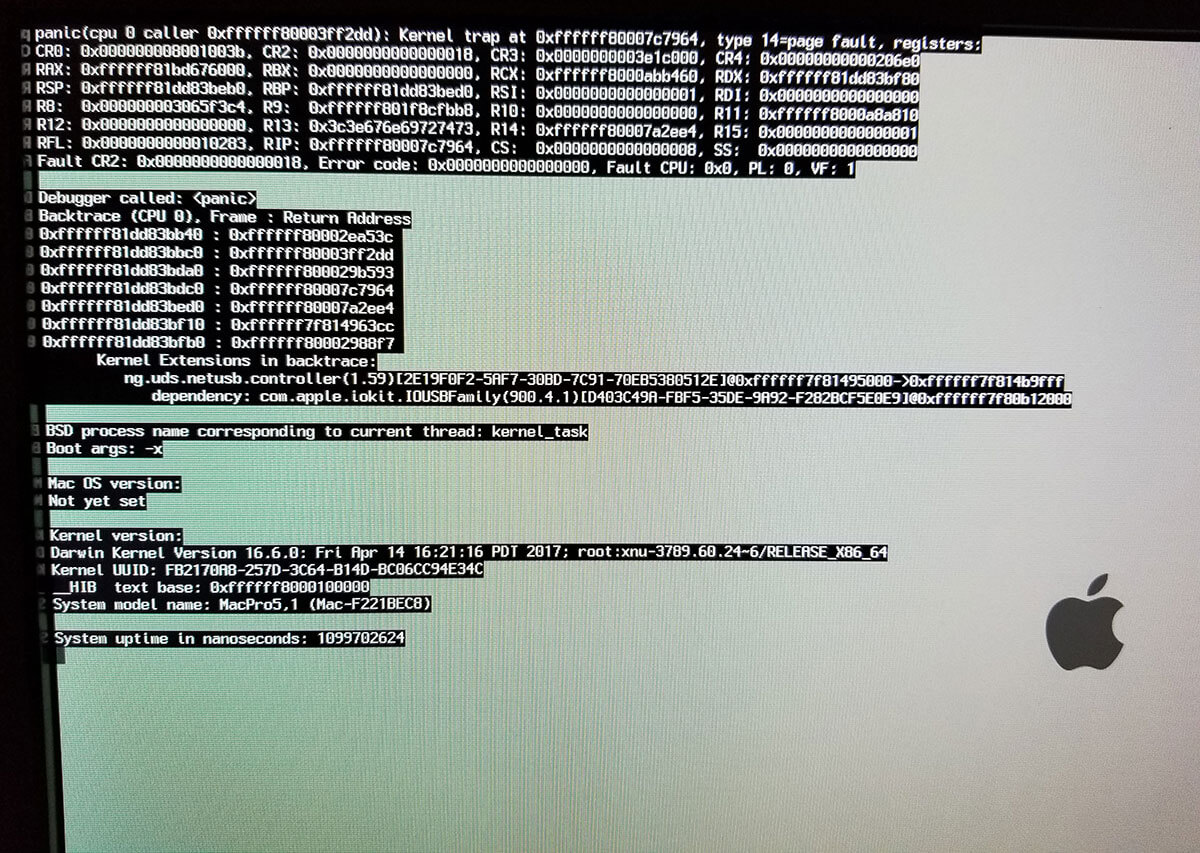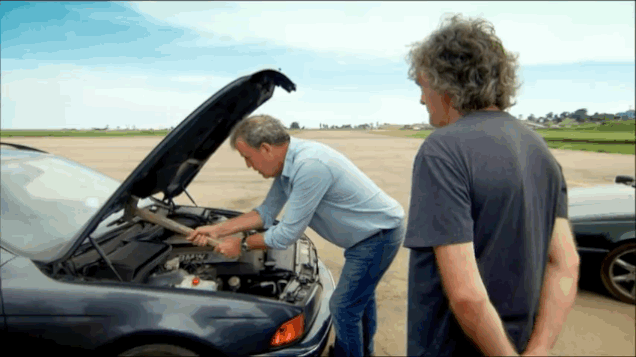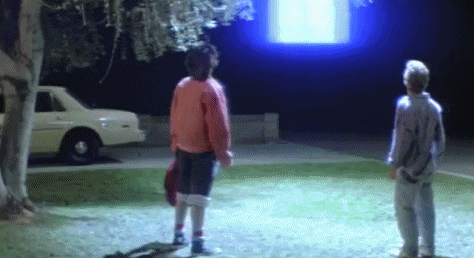When your computer is no longer in warranty and gives serious issues such as no longer booting up, panic can set it pretty quickly. I hadn’t even gotten to making my morning coffee yet when I hear boot chime after boot chime. My blogging life isn’t all travel, sunshine, and experiencing delicious food, as much as I like to think it is. I occasionally find myself into some hair-pulling issues.

Table of Contents
Updates for OSX High Sierra – January 2018
I’ve been told this guide is helpful for both MacOS High Sierra 10.13 and Sierra. I haven’t had this issue on High Sierra yet, so if this helps, please leave a comment confirming for everyone else.
One user commented with this fix which seems to be working for some of the more recent updates causing the rebooting loops:
I called Apple Support and they shared an easy fix with me. No Time Capsule Backup or USB drive required. If you have a Time Capsule Backup this will also work for that.
Specifically, this was after my computer restarted to install High Sierra, then froze midway, then once I powered off and on again, it became stuck on an endless reboot cycle, where it listed code saying something about ‘Kernel’ and ‘panic’.
Here are the steps:
If the computer is on, hold the power button until it shuts down completely.
Find the Command + Option + R keys. Press the power button and then quickly press and hold those keys.
Wait until you see a globe, then you can release the keys. Choose your WIFI network. Enter the password if necessary.
Then a loading bar appears and after some time the desktop will come up with a window in the center. There are four options. The first is to restore using a Backup. The second is the one you want, which is “Reinstall Mac OS”. I forget the two after that. Anyway. After choosing that, your computer will start updating to the most recent OS version.
It took about three hours for me. That’s it, now the restart bug should be gone and you should have High Sierra or the most recent OS available for your computer. All of my previous data was kept.
I turned my computer on and it began rebooting itself over and over and over and over and… you get the point. The Apple logo appears, progress bar shows zero, then the computer reboots.
For those reading this in hopes of finding a solution to your own problem, I’m running a Mac Pro 5,1 hexa-core with MacOS Sierra 10.12.5. If you are impatient and just want your computer to be back up and running, skip to Step 5 of this post for the working solution.
The stages of coping with loss and bereavement set in. First, denial. There’s no way this is happening. I’ll just leave the room, go back to bed, promptly get out of bed, and return to my office with a fresh start for the day. Second, anger. Blame Steve Jobs. Doesn’t matter he had nothing to do with this. Third, bargaining. Seek a deal with God or a higher power. In this case, Steve Jobs. Apologize for blaming him. Promise to buy a new computer…soonish? Fourth, depression. Coffee is ready, might as well fill the cup two thirds with some of my favorite Irish whiskey. Fifth, acceptance. Alright, this thing certainly doesn’t want to boot. Time to figure out how to fix this and/or talk myself into an upgrade – work certainly justifies the purchase. And finally, sixth, my favorite stage of coping – Google it.
Fixing the Reboot Loop
Step 1 – PRAM and SMC
The first step in any OSX problem is to reset the PRAM and sometimes SMC. What is the PRAM and SMC? I don’t really know and I don’t care. But it needs to be reset to fix random issues sometimes.
- Shut down computer, hold down the power button until it turns off if you have to. I like to wait until I hear fans and other things stop making noises before continuing.
- Hold down the keys command-option-p-r at the same time. If you have a fat thumb like me, you can totally hold down command and option at the same time, allowing one handed operation. You will have never felt cooler. Turn on computer with other hand. If you can’t one hand this, turn computer on then quickly get those 4 keys pressed down.
- Hold those keys down until your Mac reboots again and you hear the startup chime.
- Keep holding the keys down until you hear the chime 3 times.
- Let go of the keys and let your Mac reboot normally.
If you have external speakers hooked up, you might hear the chime through them the first time, then your computer internal speaker after that. That’s a good sign the reset did whatever it is supposed to do.
Normally, this fixes whatever issue I have encountered. However, with this particular issue, my computer was still rebooting on its own and never getting past the startup screen. Ugh.
Onto SMC resetting. These instructions vary depending on the type of Mac product you’re using.
For older Apple computers with a removable battery, such as the MacBook or MacBook Pro:
- Shut down the computer
- Disconnect MagSafe plug from the machine
- Remove the battery
- Press the power button for 5 seconds and release
- Put the battery back in and reconnect MagSafe cord
- Turn your computer back on with the power button.
For newer MacBook Pros, MacBook Airs, and MacBooks where you can’t remove the battery:
- Turn off the computer
- Keep the MagSafe adapter plugged in.
- Press at the same time shift-option-control (on the left side of the machine) and the power button
- Let go
- Turn your machine back on with the power button.
Take note that you keep the MagSafe in for computers with the built-in battery and out for computers where you can remove the battery.
For Mac Minis, Mac Pros, iMacs, and Xservers:
- Shut the machine down
- Unplug it from the power
- Press and hold the power button for 5 seconds
- Plug it back in and turn it on.
For me, this entire Step 1 process didn’t work.
Step 2 – Peripheral Devices

Some preliminary Googling revealed sometimes attached devices were the culprit. I unplugged my external drive, all the other stuff, and left the Apple keyboard plugged in. Booted up. Looping. Still. I scrolled down in the post – didn’t work for anyone else, but apparently this is a step Apple Support recommends if resetting the PRAM didn’t work.
Step 3 – Safe Mode
Hold shift to get into Safe Mode. Well, I didn’t get into Safe Mode, but I received a nice visualization of what was actually going on with the computer and what was causing it to not boot further than whatever it crashed at. This is called Kernel Panic and is a lot less interesting than it sounds.

At first glance, this means absolutely nothing to me. At second glance, it still meant nothing. I kept Googling, ignoring whatever that mumbo jumbo on the screen.
From this point, I begin wondering how capable my backup system is. Sure, it is backing up. But how will restoring go? After all, a backup is no good if it doesn’t restore correctly.
Step 4 – Boot from Install Disk
Turns out I don’t have an install disk handy, but I do have a USB flash drive. If you have a friend with a Windows computer, check out this post for instructions on getting setup. If you have a friend with another Apple laptop, these are Apple’s instructions.
I have to download macOS Sierra, and while waiting, I became impatient and moved onto the next steps. If you have more patience than me and want to try this step, here is a cumulation of processes I found which may or may not fix your problem.

Repair Disk
- Insert Bootable USB Drive into your Mac in question. Boot up in same version of the OS that you’re having the problem with if possible.
- Shut down the Mac
- Start up the Mac while holding down the “C” key
- Once started, go to Disk Utility in the Utility menu
- In Disk Utility, perform a disk repair of the Mac OS X volume. If no issues are found, do a permission repair as well.
- Restart without holding down the C key.
Note: For the following instructions in this process, I personally avoid these like the plague. I want to get back up and running as soon as possible. If I have to do a reinstall in any form, this means I am going to spend way too much time reinstalling applications and getting things setup. I go for the quickest processes first. Read on or skip to the next step.
Archive and Install
If the Disk Utility didn’t fix the reboot loop, but you’ve managed to start from the OS X Install Disk or the Bootable drive, perform the following:
- Start up the Install Disk by holding down the “C” key as described in the steps above.
- Go to Install and Restore option
- Select your language. Click Continue. Read [Or scroll as fast as possible to the bottom] license, click Continue.
- Click the volume you wish to install to
- If you don’t want to lose your data, make sure to click Options
- Select Archive and Install
- Select the Volume where the Mac OS X was already installed
- Select Preserve Users and Network Settings (to keep a safe backup of your home directory, and any other users directories where your files may have been)
- Click OK
- Click Continue for the installation to begin
To check the list of files and folders that are stored and accessible before you continue to the last and final 2 options, review this Apple Support document.
Time Machine Backup

If Archive and Install didn’t work, its time [ha] for a Time Machine backup. Which probably will cause the same issue at some point, plus you’re going to lose your latest things/changes/files/etc. This is unacceptable for me. If you run a business from your computer, this is probably unacceptable for you too.
- Insert your Mac OS X Bootable Drive
- Shut Down you Mac
- Start up using the “C” key
- Do the same steps as in the previous “Archive and Install” process. However, when the choice is given, go for the “Erase & Restore” setting.
- Set up your mac as a new one. Reconnect your Time Machine disk
- Restore from a previous backup of Time Machine where you know for a fact it was working correctly.
Again, while this step was listed as an earlier solution in my searching, this should probably be your last resort.
Step 5 – Recovery Mode into Terminal
How fortuitous I skipped over the restore steps out of impatience. Multiple people reported the issue of a reboot returning. Talk about a waste of time getting everything setup again again.
Terminal requires some basic Linux commands. I like to Google new commands and things I haven’t done before to make sure I understand what is about to happen. Here are some common commands I run into. There are tons more I never touch, but these are the commands I use quite often when troubleshooting.
- cd – change directory
- cd .. – Go up one directory
- ls – list files in current directory
- rm – remove stuff – the scariest one for me
- sudo – provides administrator capabilities to whatever you’re trying to do
- help [command] – useful in figuring out what whatever I’m doing isn’t working
- During one of the reboot loops, press Cmd-R to enter recovery mode. Release keys after you see the Apple Logo and progress bar.
- Select English as the language in the prompt.
- Don’t select a macOS Utility from the window that comes up.
- From the menu at the top, click Utilities, then Terminal. Make sure to be very specific and tyop free when using these commands. Typo intended, silly.
- cd to Volumes: cd /Volumes/
- ls to see what you have: ls
- I have several volumes/disks, so I needed to locate the correct one I booted off.
- cd to the correct volume – capitalization counts: cd /Volumes/”Disk name quotes for spaces”/
- ls to verify you are in the correct spot. You should see a bunch of folders listed instead of the volumes: ls
- cd to Caches folder: cd System/Library/Caches
- Delete everything in Caches – note, this command deletes whatever folder you are currently in, so use carefully. ls if you must to verify location: rm -fR *
- Go back one level: cd ../
- Regenerate some stuff, apparently a “pre-linked kernel: touch Extensions
- Check disk to repair any errors – there shouldn’t be any: fsck -fy
- Reboot: reboot
This didn’t appear to work initially – the suspense was killing me. Booting up took forever. Suddenly – my login screen! Yes!!!
Additional Thoughts
Now, going back – remember that photo I posted that showed the kernel panic? If you look in there, you’ll see I have:
Kernel Extensions in backrace:
ng.uds.netusb.controller (1.59 ) blah blah blah
Whatever those commands did seemed to fix the USB controller. Lots of googling shows a similar controller for other users having the same issue.
Some of the other blogs/forums I found mentioned removing stuff in /var/ folders. I can tell you from previous experience /var/ stuff should be untouched and can cause other issues.
All in all, this entire process took me almost 5 hours to figure out what would work. The last step took about 3 minutes.
If you found this post trying to fix your computer, please comment and let me know if this worked for you as well, and if it didn’t, how you fixed the issue.
If you want to show financial appreciation, use this Amazon link when shopping and I receive a small commission and you get the same great prices and fast shipping.
- About the Author
- Latest Posts
I strive to paint vivid landscapes with my words, bringing the magic of far-off lands and enchanting aromas to life for my readers. Combine passion for exploration and the art of gastronomy in an unending ode to the senses. When I’m not traversing the globe, I find solace in the earth beneath my fingertips, tending to my garden and working on projects around my verdant oasis. MK Library serves as a beacon, guiding fellow travelers and homebodies alike to embrace sustainability, nurturing both our planet and our souls with purpose. Full Bio.




This worked ! Took only the last step, Thanks a lot !
Context:
Late imac 27′ 2009 core 2 duo with fusion drive (non apple ssd)
trying to install updates for High Sierra since i couldn’t install Mojave and stuck on infinite fail and restart loop
I just applied Step 5 and the screen has been frozen on the terminal box with this message after the reboot instruction:
reboot: /Volumes/Macintosh HD is busy updating; waiting for lock
It’s been like that for 20 minutes… I’ll keep waiting…
Great article
The rebooting system for the Apple devices has been updated as the Apple technology has focused its sources. Thus the people can experience some high range bootup significances.
Hi! Thanks for this post! My MAC is now fixed! 🙂
Thanks 10million! Worked!
I’ve tried that method and the globe did in fact appear along with the wifi option but… IT CRASHED my laptop wouldn’t function, the mouse pointer won’t move and nothing is changing 🙁 help!!
I tried all the methods but no one these works for me so I make a pen drive boot but still with same issue.
After a time I tried again and it worked. But this is is very terrible because I don’t know what the reason for this issue. It is a very annoying problems with apple updates.
I’m trying again now make a new fresh installation of my high Sierra and if it works I think the best solutions for this issues is never update again a recent package from apple because this issues that they don’t give us a satisfactory feedback.
To MK i would try to reference or incorporate RED_CHILD’s fix mentioned in the comments. That’s what did the trick for me right away. Thanks so much tho i thought I’d lost everything i was freaking out. Much appreciated.
Thanks for the feedback on that fix. I will add it to the main post! Happy to hear you didn’t lose everything!!
I had a similar issue after a user claimed one our software updates forced a reboot.
The Device would come up to a logon, then after logon it displayed a message:
“The path /System/Installation/Packages/OSInstall.mpkg appears to be missing or damaged”
then the only option was to reboot.
Holding Option at boot showed two devices “Mac HD” and “InstallOSX”, the latter was the default.
I chose “Mac HD” and it booted and logged on normally. The next action I did was to choose “Startup Disk” where the only option was “Mac HD”, rebooted and again logged on normally.
Hope this helps someone . . .
Ed R.
Final thought . . .
Macintosh’s are around so that Kindergartners can say they know how to use a computer.
When I go to enter steps 7-9 I am not sure what to put. My volumes say BOOTCAMP and Macintosh Hd and OS X but when I enter any of these such as cd /Volumes/ Macintosh HD / , I go to check with step 8 “ls” and nothing has changed.
Also step 9 or cd System/Library/Caches tells me there is no such folder. I assume that means I’m messing up on step 7
Can anybody help?
Red_child!
That totally worked for me.
I was trying to get High Sierra onto a 2010 MacBook Air for my brother and it kept rebooting itself each time after the Apple Logo and the progress bar only stayed on for a split second before rebooting.
It was driving me mad!
I tried to boot off a USB stick, I tried downloading directly to the hard drive…it didn’t seem to make a difference – it kept rebooting. I was a bit dubious about whether pressing Command + Option + R would work and whether it would restore the native OS (Mavericks) onto the MacBook air, but as you said, it installs the latest and greatest OS (High Sierra in this case) instantly (in about 40 mins in my case).
Thanks so much!
It was easy as Command – Option – R!!!
Now all I need to do is to figure out how to swap out the keyboard as the top row of keys no longer work!!!
I called Apple Support and they shared an easy fix with me. No Time Capsule Backup or USB drive required. If you have a Time Capsule Backup this will also work for that.
Specifically, this was after my computer restarted to install High Sierra, then froze midway, then once I powered off and on again, it became stuck on an endless reboot cycle, where it listed code saying something about ‘Kernel’ and ‘panic’.
Here are the steps:
If the computer is on, hold the power button until it shuts down completely.
Find the Command + Option + R keys. Press the power button and then quickly press and hold those keys.
Wait until you see a globe, then you can release the keys. Choose your WIFI network. Enter the password if necessary.
Then a loading bar appears and after some time the desktop will come up with a window in the center. There are four options. The first is to restore using a Backup. The second is the one you want, which is “Reinstall Mac OS”. I forget the two after that. Anyway. After choosing that, your computer will start updating to the most recent OS version.
It took about three hours for me. That’s it, now the restart bug should be gone and you should have High Sierra or the most recent OS available for your computer. All of my previous data was kept.
Dude. Same exact situation. Dual 6-core 5,1 machine. Bootloop. 2 hours of hair pulling. Then I found your Step 5. Bingo! Worked perfectly.
Thank you!!
Reinstalling Mac OS from recovery mode worked
Disk first aid, PRAM reset did not
Hardware test showed no flaws
Safe mode got me a similar screen to yours